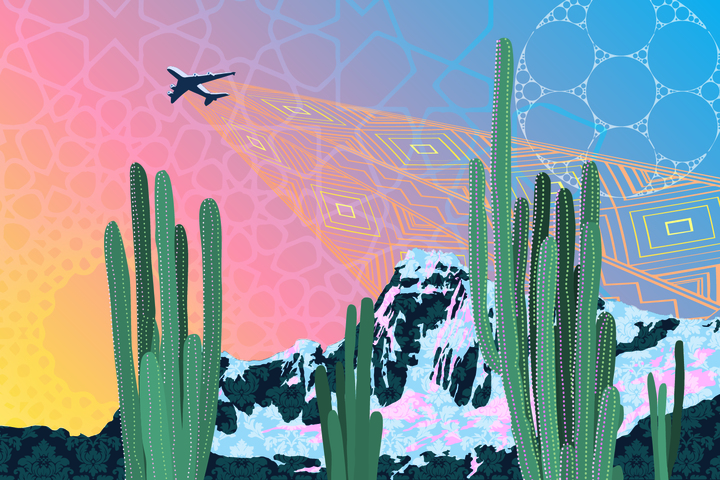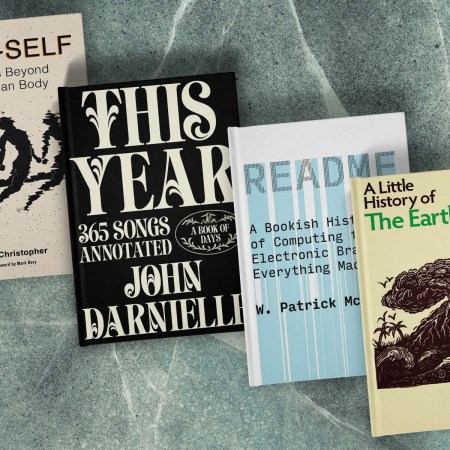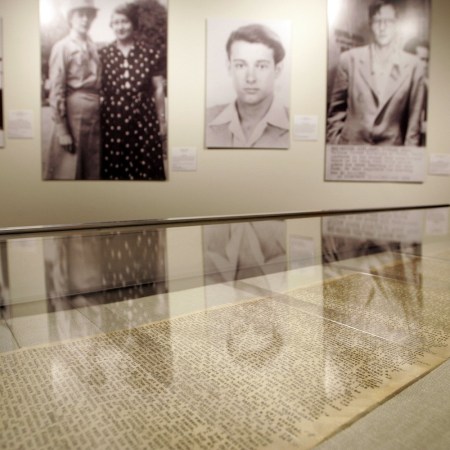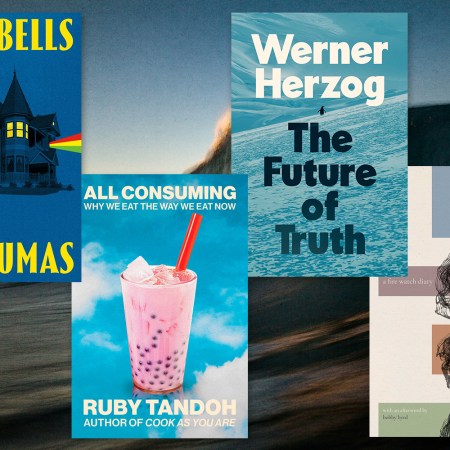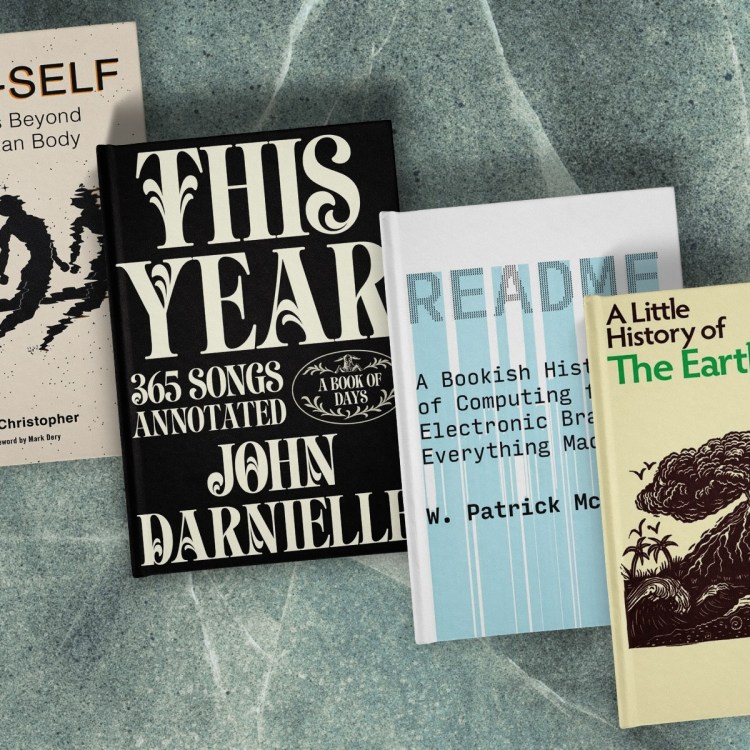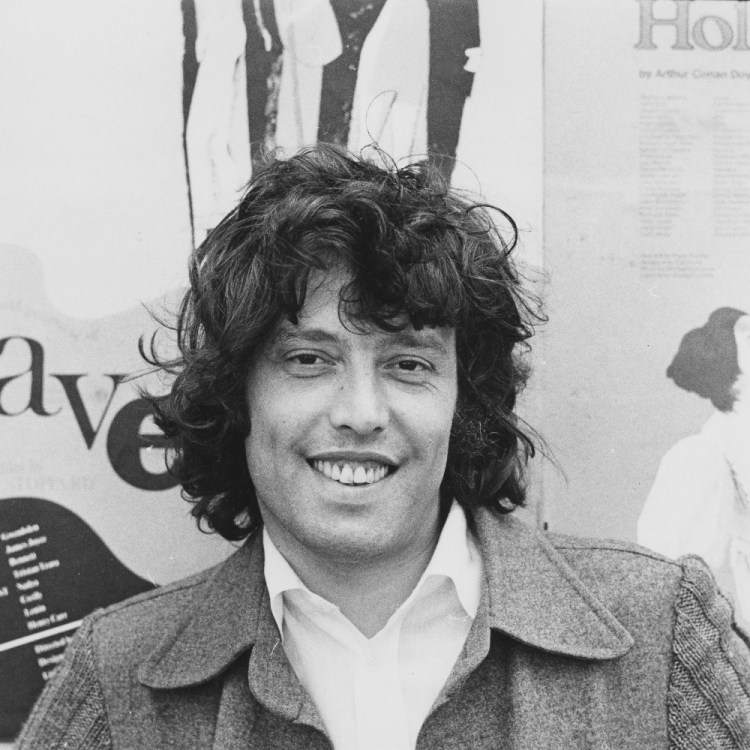When I was first presented with a copy of Rob Doyle’s latest novel, Threshold, the person giving me the book said the writing tapped into something that was equal parts On the Road and Irvine Welsh’s Trainspotting. Normally when I hear a comparison like that, my first thought is that the person talking to me has read maybe 10 novels in their life and the ones mentioned are three of them. Also, comparing something to Jack Kerouac’s most famous novel doesn’t exactly make me hopeful. It’s an iconic book, sure, but it’s also not the easiest thing to get through, and anybody trying to copy Kerouac’s famous stream-of-consciousness narration is almost never using the same drugs, and if they are, they definitely aren’t producing the same results.
But it didn’t take long for me to understand the comparison. Doyle is a writer who, to steal a quote from the Beach Boys, just wasn’t made for these times. He’s a searcher, or at least his narrator is. And like Kerouac, William S. Burroughs, Hunter S. Thompson and Philip K. Dick before him, drugs somehow help fuel the search as Rob’s first-person stand-in travels from place to place, gobbling and snorting whatever he can get his hands on, trying to make sense of his life and this very odd century we’re in.
It’s an odd feeling as we’re all stuck in our homes during a pandemic — to lean on a fictional character’s ravenous drug use as a way of escaping. But from the opening line of Threshold to the very last, I was hooked as much as I was haunted. Doyle gives you just enough reason to believe he’s some detached person floating through this world without purpose or motivation, then gives you pathos and (typically dark) humor the next. Threshold is a wonderful novel, and we’re proud to present this excerpt from it. – Jason Diamond, Features Editor, InsideHook
Since 31 January 2006, it has been illegal to possess or sell magic mushrooms in Ireland, including the kind that grow wild in the country. I left Ireland in the spring of that year, and would not properly return for another seven years, during which time I made it my business to see as much of the world as possible. The next time I took magic mushrooms was in Thailand, in a wooden hut that served as a bar and cafe perched atop a hill in the centre of the paradisal island of Ko Pha-Ngan. I rode up there on a rented motorbike along with French and German friends. We bought the mushrooms at the bar – it wasn’t legal, but it was tolerated (payments had probably been made). We had fun, and mild hallucinations, but not the deep psychedelia and startling insights I had experienced on stronger doses. A year or so later, I was travelling and living in South America. There, I had several marvellous encounters with the hallucinogenic cactus San Pedro, which grows on the Altiplano of Bolivia and Peru. Later, first in Peru and then in Colombia, I had many even more intense experiences with the hybrid hallucinogen ayahuasca (or yagé ), generally considered among the most potent psychoactive substances in the world. Ayahuasca is a central part of the cultural and religious life of some indigenous tribespeople of Amazonia. The friends with whom I gathered to drink ayahuasca every weekend at an artist’s house in the hills outside Bogotá were professors, writers, artists and scholars, mostly in middle age, who had been deeply involved with the experiential, scientific and philosophical study of yagé for many years. The ceremonies were always overseen by their friend Crispin, a young, softly spoken shaman (or taita, in his own dialect) from the Amazonian south. Crispin travelled up to the capital each weekend bearing several flasks of the foul-tasting concoction. His entire life revolved around ayahuasca. Throughout the imbibing ceremonies, during which fragrant woods were burned, smoke wafted and incantations uttered, Crispin referred to the yagé with the affectionate, diminutive form yagécito – as if the spirit that he believed animated the brew was his otherworldly little friend. Ayahuasca exerted such fascination on me that I made plans to return home and begin a PhD on the affinities between the atheistic mysticism of Georges Bataille, Nietzsche and other Western philosophers and the psychedelic shamanism of the Amazon basin.
It was in South America too that I first came upon the writings of the ethnobotanist Terence McKenna, a brilliant advocate of the consciousness-expanding effects of hallucinogenic plants. Even if the often jaw-dropping ideas suggested in books of McKenna’s like The Archaic Revival and Food of the Gods turned out not to be true, they could still be read with great pleasure, and to wildly stimulating effect, as an outré breed of speculative or science fiction. Throughout his work, McKenna puts forward the claim that it was plant hallucinogens, particularly psilocybin mushrooms, sprouting in various parts of the world and offering consciousness enhancing evolutionary advantages which enabled the great leaps forward in human culture that, among other things, provided the ur-experience of religion.
McKenna sometimes deploys a sober, professorial voice while putting forward arguments that, if true, would hurl into disarray all that our orthodox philosophies hold to be the case. In an essay entitled ‘Mushrooms and Evolution’, he writes: ‘For tens of millennia human beings have been utilising hallucinogenic mushrooms to divine and induce shamanic ecstasy. I propose to show that the human–mushroom interaction is not a static symbiotic relationship, but rather a dynamic one through which at least one of the parties has been bootstrapped to higher and higher cultural levels.’ Here we glimpse one of the strange notions about magic mushrooms that find fuller expression elsewhere in McKenna’s work, namely that the mushrooms may constitute an intentional, conscious species – that they, in some sense, have an agenda.
McKenna insists that ‘the mushroom religion is actually the generic religion of human beings’, and that ‘all later adumbrations of religion stem from the cult of ritual ingestion of mushrooms to induce ecstasy’. Elsewhere he makes even more vehement claims for the ontological implications of the experiences offered by other plant hallucinogens, in particular ayahuasca and its psychoactive component, DMT (N,N-dimethyltryptamine). The numinous and profoundly weird experiences produced by these substances, in which one will frequently have a compelling sense of coming into contact with entities, landscapes and intelligences external to the self, and even to broader human experience, are religio mainlined – not prayers, art, texts and rituals gesturing towards the ineffable, the transcendent Other, but the thing itself. The shamanic imbibing ceremonies of the ayahuasceros of the Amazonian region offer immediate access to a ‘hyperdimensional’ and ‘hyperspatial’ zone that McKenna claims is teeming with non-human entities. Perhaps it is futile to voice McKenna’s more outlandish claims to those who have never experienced the effects of the plant hallucinogens at high doses (‘heroic doses’, in McKenna’s exhortative phrase), but to those who do have first-hand experience of the deeply alien, sometimes shocking vistas they open up, his ideas may not seem so far-fetched.
The next time I ingested magic mushrooms was a number of years later, in San Francisco, where I lived for a few months. My then girlfriend, not a drug user, had been given a bag of mushrooms by a friend. There were enough for two or three people to enjoy a strong trip, but I persuaded myself otherwise and consumed the entirety of the contents one thickly overcast early afternoon. I then left our apartment to wander around Haight-Ashbury, one-time mecca of the hippy dream and now a sordid, dismal zone of wrecked aspiration. Soon realising that I had consumed a formidable dosage, I retreated to the top of Buena Vista Park, a steep, forested hill from where one can see the bay, the Golden Gate Bridge, the skyscrapers of downtown San Francisco, Ocean Beach and the Pacific. As fog swarmed in to engulf the hill, I plunged into dread. All of my semi-repressed anxieties – the full awareness of the catastrophe I was then living – rose to the surface. Growing desperate, I felt the only hope I had was to adopt a meditative posture and marshal all my psychic and emotional resources in order not to become swallowed up in the black hole of my own terror. The hallucinations were so strong that, at the height of it, it made little diff erence whether my eyes were open or closed. As I gradually grew calmer and gained a hold on my fears, intense but more benign emotions flooded me. I had a vision of twenty-first-century America as a wasteland of broken, defeated people, a sorrowing mass of human wreckage and unanswered prayers – I knew then that I could not live there permanently, a possibility I had been strongly considering. By the time I fi nally came down from the hill, it felt like a very long time had passed. In reality, it was about six hours. The trip was distressing, yet not one I regretted having. The next morning I began writing a short story that delved deep into sorrow and trauma and emerged, I thought, with some glinting shard of truth.
In the Phoenix Park, the sun was setting as I continued filling my Pringles container with liberty caps. As I stooped by the white paint markings of a soccer pitch, a man who was walking his dog along the pathway greeted me and enquired if I was picking magic mushrooms. I said I was and we began to chat. He was in late middle age, with grey hair, and was amiable and respectable. He told me that he and his friends had picked and consumed magic mushrooms for years in their youth. They used to go out to the Curragh, he said, and fill up cornflakes boxes with enough mushrooms to last the entire year, until it was time to go picking again. ‘We’d just sit there, in one of the lads’ places, and laugh all night,’ he said. He tentatively warned me about being seen picking mushrooms by the police. ‘To them it’s probably the same as if you had a box full of LSD,’ he said, but admitted he wasn’t entirely sure of what the law stated. He was thoughtful for a moment, watching his dog as it scampered by a goalpost. ‘It’s a bit silly, when you think of it,’ he said. ‘People were picking these things long before there were Guards. The mushrooms were growing here before there was any legislation at all. Can something be illegal that grows in the ground?’
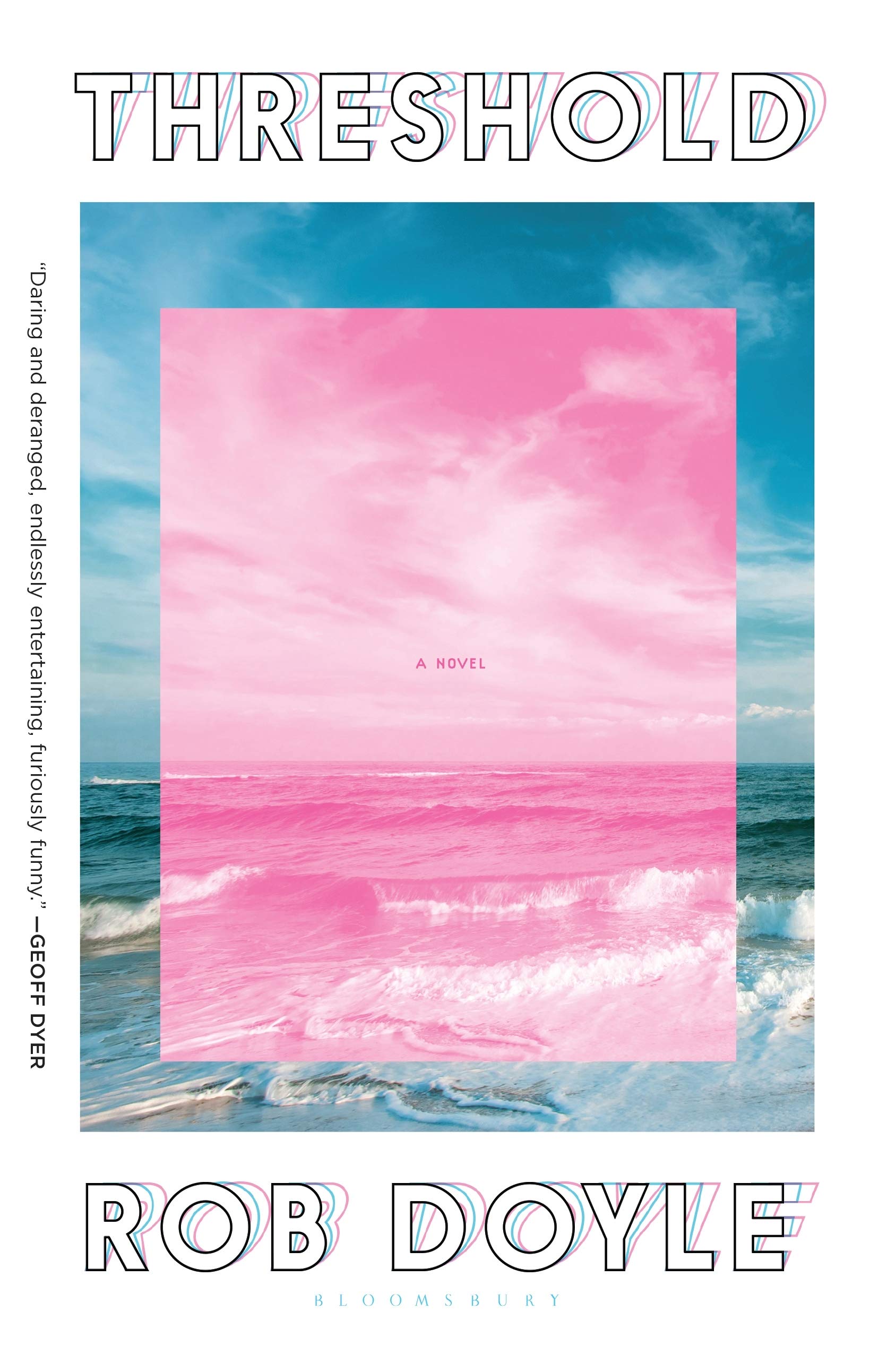
He said he had picked up a few of the mushrooms earlier, noticing that they did indeed look like the hallucinogenic variety, but a friend had warned him that these were a ‘mimicking’ kind, not the real thing. He was wary about picking the wrong ones because of a bad trip he’d once had, at the twilight of his psychedelic youth, when one or two ‘bad shrooms’ must have gone into the mushroom cake he and his friends had baked. ‘I totally freaked out. Took me about two weeks to get back to normal.’ He wished me well and hoped I had a good time.
I remember telling a friend, when I was twenty or so, that I took drugs so that one day I wouldn’t have to take drugs. The idea was that, by gaining access to the weirder potentialities of consciousness, my basic stance towards existence would be altered: shorn of the tedium and banality that oppressed me in those years, I hoped I could come to experience consciousness itself, and the bare fact of being in the world, as ineffable, awesome, impregnably mysterious. The funny thing is that this really did happen. The occasional mushroom excursion aside, I rarely bother with drugs any more. Th e drugs I took in my youth – along with the art, literature and philosophy I imbibed with equal enthusiasm – helped to reconfigure the lineaments of my consciousness so that, nowadays, the mere fact of being here at all, the fact that something exists, consistently astonishes me. I don’t mean to suggest that one needs drugs, or even art or philosophy, to connect with the mystery of being, the supreme unlikeliness of finding oneself alive in an unaccountable universe. I mean only that I spent part of my youth oppressed by a boredom I now consider to have been a delusion, born of the depressive belief that the world around me was mundane, paltry, comprehensible. Bitterly at odds with my surroundings, I needed certain jolts to get me back in touch with my own capacity for wonder, which I now happily find to be a self-replenishing source.
A week after I had spent my Friday in the Phoenix Park, my girlfriend Alice was visiting from France, and my friend Sam came up from Wexford for the night. It was Halloween – the old pagan feast of Samhain, as Sam reminded me. The three of us had dinner at my place, in candlelight, with the fi replace blazing and music from Spotify streaming through the speakers. After dinner, I boiled up a brew. The anxieties I had attached to the mushrooms a week earlier had dissolved. The mood was ideal; I knew we would have a lovely time. Neither Alice nor Sam had ever taken magic mushrooms before, so I kept it mild. There was no anxiety, no unwelcome intensity, only joy, laughter and keen, open conversation. Later we wrapped up warm and walked to the Cobblestone pub, where a cluster of traditional musicians were playing in a corner, and some of the clientele were dressed as pirates, ghouls and zombies. Before going to bed that night, I swallowed the mushrooms I had boiled earlier, so that whatever residual psilocybin remained in them would animate my sleep. And so it did: I slept deeply, with strange, otherworldly dreams. I wandered through ancient hallways, encountering gods and sculpted sages who were immeasurably older than me, and who regarded me with solemn, unfathomable gazes before looking away towards unseen horizons, bearing intentions I would never understand.
Adapted from Threshold by arrangement with Bloomsbury USA. Copyright © 2020, Rob Doyle.
This article appeared in an InsideHook newsletter. Sign up for free to get more on travel, wellness, style, drinking, and culture.
